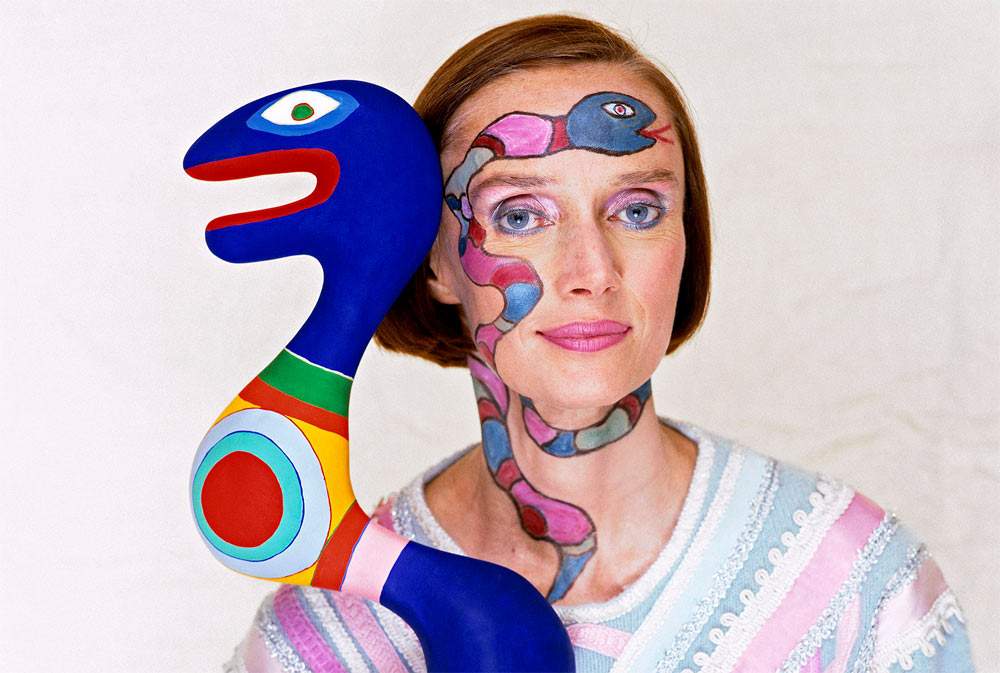This summer there will be a major exhibition on Niki de Saint-Phalle in Capalbio, across three venues
From July 9 to Nov. 3, 2021, a major exhibition will be held in Capalbio (Grosseto, Italy) over three venues to tell the story of the work of Niki de Saint Phalle (Neuilly-sur-Seine, 1930 - La Jolla, 2002) and her relationship with Italy. Thanks to the testimonies of friends and collaborators, who with Niki gave life to the Tarot Garden in Capalbio, more than 100 works, including sculptures, drawings, videos, and photographs from the 1960s to the 1990s, some of them unpublished and never before presented to the public, are on display in the three venues of the Tarot Garden, Palazzo Collacchioni and Galleria Il Frantoio.
The exhibition, titled The Place of Dreams: Niki de Saint Phalle’s Tarot Garden, is curated by Lucia Pesapane and aims to recount the relevance of the feminist, environmentalist, avant-garde and committed message that Niki de Saint-Phalle left behind. More than 100 works, including sculptures, drawings, videos, and photographs from between the 1960s and the 1990s, some of them previously unpublished and never presented to the public. The generosity of collectors with the collaboration of The Tarot Garden Foundation, The Niki Charitable Art Foundation and Capalbio Foundation finally made the project possible.
Capalbio is one of Niki de Saint Phalle’s places: here the artist, in creating her Tarot Garden (the beautiful park located in Garavicchio) shared everything with her assistants and friends, valuing and encouraging collaborators to create with her in the name of a collective project where the absolute protagonist is art. As early as the 1980s, the artist put into action her quest to live in a different collectivity, in a compassionate and empathetic society rich in community values. Not only as an artist but also as a woman of action and avant-garde. The Garden is thus the result of a lifetime dedicated by Niki de Saint Phalle to art and proof that dreams can come true, even if one is a woman, an artist, an entrepreneur, and the sole financier of such a work: moreover, like most of her work, the Garden is the manifestation of a microcosm capable of revealing the deepest and most secret archetypal images of our unconscious. Indeed, for the visitor who crosses its perimeter wall, which symbolically separates the real and imaginary worlds, an initiatory journey opens up, leading him or her to battle dragons and devils and run into queens and prophets to eventually meet the Angel of Temperance.
An ante litteram feminist, beginning in the 1950s Niki de Saint-Phalle defended the civil rights of African-Americans, while in the 1990s she was strong in her criticism of the Old World, which promulgated a dangerous rise of conservatism, siding with a united and progressive Europe. “I dream of living in a space without borders,” he declared. His reflections regarding ecological issues and climate change became increasingly urgent, especially in the last years of his life. In light of these social commitments, which she was so passionate about, Niki would certainly have seen the crisis we are facing today as a crucial moment to create something new and better. Deeply convinced of the human capacity for innovation and reinvention she would have interpreted this time as a moment of collective consciousness raising, which can open a new way against the arrogance and aggressiveness of the political, economic and financial system.
The exhibition aims to bring out all these aspects by following a precise thematic path. In Palazzo Collacchioni, in the ancient village of Capalbio, the history of the Tarot Garden is traced from the late 1970s to the present through photos, videos, sculptures, maquettes, and collages that help to understand its way of working and its true spirit. In the Il Frantoio Gallery, on the other hand, a number of historical works are exhibited, including assemblages from the 1960s, maquettes in unbaked clay preliminary to the creation of the Garden, his final masterpiece, and unpublished archival videos. Curatorial choices have privileged the analysis of the artist’s symbolic language by dwelling on the interpretation of the Tarot cards. Sculptures of the cards are also on display, accompanied by lithographs, drawings and quotations.
Moving then from two places in the ancient village, Palazzo Collacchioni and Il Frantoio Gallery, we reach the Tarot Garden, the French artist’s most significant work. The exhibition’s installation design, curated by Viviana Panaccia, recalls the artist’s round, soft and colorful universe and is inspired by a concept very dear to her: “I like what is round. I like what is round, curves, undulation, the world is round, the world is a breast. I don’t like the right angle.” Special wooden structures with soft and sinuous shapes, shaped with a laser machine and painted in the artist’s favorite colors, have been specially designed to house the more than 100 works, along a dense itinerary enriched by maquettes, photos, drawings and other objects, among the most evocative of his artistic activity. Some of his most significant works are displayed in large-scale picture galleries, while site-specific installations have been created for inflatables and large sculptures.
Information is available at the Tarot Garden website.
 |
| This summer there will be a major exhibition on Niki de Saint-Phalle in Capalbio, across three venues |
Warning: the translation into English of the original Italian article was created using automatic tools. We undertake to review all articles, but we do not guarantee the total absence of inaccuracies in the translation due to the program. You can find the original by clicking on the ITA button. If you find any mistake,please contact us.




























